By Brian Alm. Published in Egyptological, Magazine, August 14th 2012
Introduction
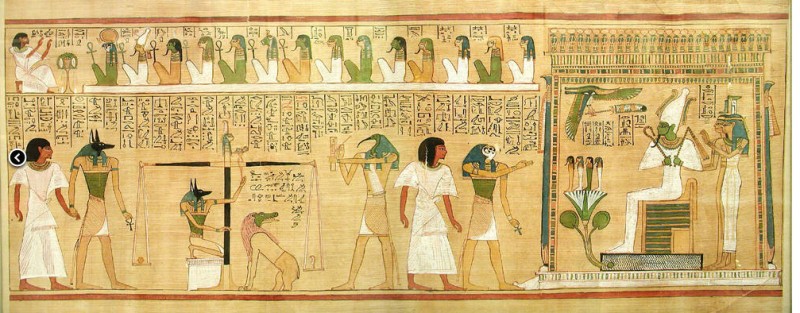
Figure 1. The depth, complexity and grandeur of Egyptian thought, expressed in art and architecture, invite timeless fascination. Photograph copyright Trustees of the British Museum.
We have been watching the force and flow of three concepts in the stream of Egyptian culture and religion through the course of this series — order, duality, and divine magic — which informed Egyptian thought and practice for more than 3,000 years. The business of this article is to go back into the deep past and look at the roots of Egypt’s religious and socioeconomic culture, and then to test the durability of those formative ideas by examining the only major departure — the 18th Dynasty heresy of Akhenaten — which, by threatening the ancient heritage, actually reconfirmed it.
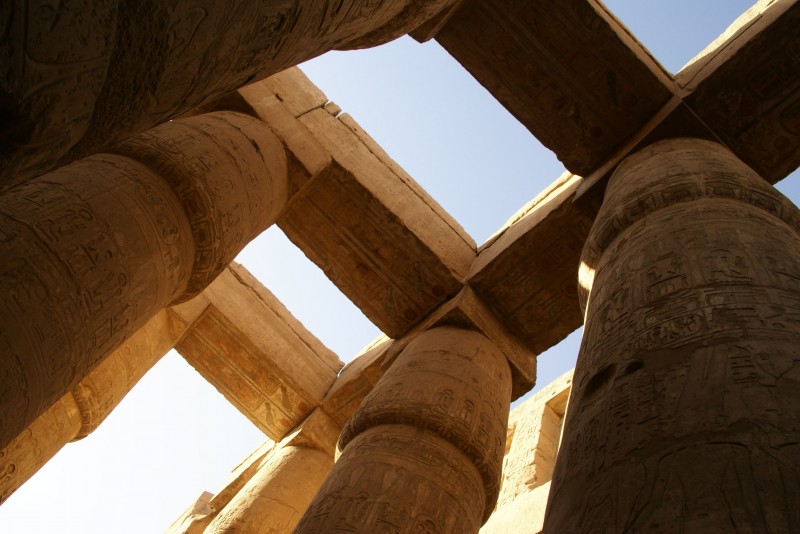
Figure 2. Soaring columns of the Temple of Amun, Karnak, testify to the restoration of the old religion in Egypt after the Amarna interlude.
The homogenization that has characterized this series, treating so much as if it were constant throughout those 3,000 years, is legitimized by the fact that the ideas planted early, many even before the dawn of dynastic history, continued on, with very little mutation, despite the lack of creed or canon; perhaps, in fact, because there was no dogma to render religion inflexible. Nourished in the cultural stream, the plant kept producing fruit true to its roots: beliefs, motifs of art and architecture, practices, rituals, theologies and myths that are familiar wherever we encounter them on the continuum of history. [Figure 1] “It is impossible to think of any other society whose social structure, art, architecture, language and funerary practices demonstrate a comparable unbroken tradition,” writes Joyce Tyldesley. “It is this continuity that makes possible a study … incorporating the whole of dynastic Egypt” (Tyldesley 2000, p. 15).
The one exception was Akhenaten’s short-lived Amarna interlude, which, at a cursory look, seems to have drawn attention entirely out of proportion to its importance. But heeding the axiom that the exception proves the rule, we find that in its momentary flicker, this movement served to re-establish the age-old principles and practices of Egypt, for we see in its aftermath the restoration of traditional order, grandly expressed in the largest temples and the most elaborate subterranean tombs in all of Egyptian history. But let’s begin at the beginning. [Figures 2-3]
Echoes from Antiquity
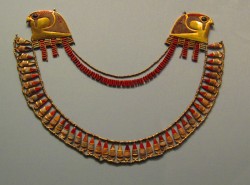
Figure 3. Exquisite jewelry echoes religious themes that go back to Predynastic times, such as Horus the celestial falcon.
Already we are frustrated: we can’t even define “the beginning.” By the time evidence of religious thought appears in the archeological record, the culture that would become Egypt had been developing for perhaps 4,000 years or more, and so we join the story well along, when it was written, not when it was conceived. But we can hear the echoes from the ancient past, and we can see what was already in place in the culture as far back as 4500 B.C., in the Badarian Period that preceded Naqada I*, and speculate plausibly even though we may never retrieve all the answers from the depths of time. *Note: For simplicity and consistency, I am using Ian Shaw’s chronology (Shaw 2000): Naqada I [4000-3500 B.C.], II [3500-3200] and III [3200-3000].
How did it all begin? The River Nile itself is a starting point. The 5th century B.C. Greek historian Herodotus, in one of the few instances of his reporting that seems unassailable, called Egypt “the gift of the Nile.” [Figure 4] In Part 1 we saw the duality of desert and river, desolation and fertility, death and life, which leads to the principle concepts of chaos (isfet) and order (maat). As astute observers of nature, the Egyptians connected the dots: the Nile; the daily, monthly and annual cycles; the balance of fertility and desolation. They recognized, as Joyce Tyldesley has said, that “all life depends on fertility…. Their fields, their animals and, of course, their women all had a natural reproductive cycle which was essential for the continuance of Egypt and which should therefore be celebrated” (Tyldesley 2000, p. 155-56).
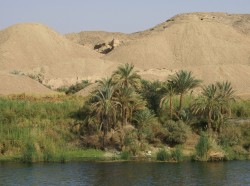
Figure 4. The duality of desolation and fertility, evident in the Nile Valley, is a metaphor of chaos and order.
The ideal metaphor for that idea was the reality of the life-giving Nile Valley, which, together with the desert that surrounded it, testified to the basic duality of the universe: order versus chaos. The Egyptians’ recognition of order bound with chaos obligated them to protect one from the other assertively, and so the Egyptian civil and social structures were built upon that value; its profound implications for thought and theology could not have been far behind. When the forces of nature were in proper balance, the cycles rolled on, ensuring fertility in this life and empowering resurrection in the next.
The Supremacy of the King
Who could marshal the forces required to control the Nile? The king, of course, by ordering the building of dikes and ditches. “The Nile flood [was] an especially chaotic moment in the cosmic cycle of renewal that required extraordinary powers to negotiate” (Friedman 2011, p. 36) [Figure 5], so whoever could do that was extraordinary. Despite the chicken-and-egg question, the result was that Predynastic Egypt was built on the recognition of “sacred power, fully blended with the concentration of economic, political, and military power” and was “not a product of either ideology/religion or coercion taken separately, but of their joint effort embodied in the concept and person of a divine king” (Andelkovic 2011, p. 27, 31). Once established in preliterate prehistory, the belief in an all-powerful king remained fundamental in the culture until 30 B.C., when Egypt ceased to be a sovereign state.

Figure 5. Taming the Nile by human will demonstrates the early blending of sacred and political power.
The godlike supremacy of the king was established very early. Renee Friedman reported in 2011 that recent research can place Narmer, the last king of Dynasty 0, in a story that goes back to around 3600 B.C., “500 years earlier than previously imagined,” and so “a multi-tiered, stratified society was already in place by the beginning of the Naqada II Period,” under strong leaders with the means to express their authority (Friedman 2011, p. 44).
Now, how does that sociopolitical development apply to religion? Let’s connect the dots ourselves by looking again at the key forces at work in the formation of Egypt: recognition of the duality of fertility and desolation, order and chaos, and the consequent need to control nature in order to preserve Egypt, and thereby the order of the universe itself; the institution of kingship in response to those necessities; and the rise of ideas — foremost among them, religion, which could explain the mysteries, deify the concept of order, and deal with death.
Food Production and Craft Specialization
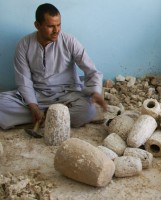
Figure 6. Alabaster vases, bowls and jugs are being made today just as they were more than 5,000 years ago, with hammers, hand drills and abrasives.
Now an interesting economic development enters the picture. Control of natural resources meant more efficient and reliable food production, which led to surpluses. Lacking permanent storage facilities, the Egyptians began developing a redistributive economy (Friedman 2011, p. 35). Likewise, craft specialization, which appeared between 4400 and 3900 B.C., soon developed into a full-time occupation (Hendrick 2011, pp. 93-94). [Figures 6-7] Producers now specialized in their crafts and left agriculture and livestock to others ( Köhler 2011, p. 123). When people venture out and come together to trade their surplus food and and crafts, they also share ideas. Religion spreads. The Egyptians were ecumenical, willingly accepting and absorbing diverse beliefs and interpretations, so the religion grew as a cumulative assimilation of ideas.
Sometime in the Naqada I Period, certainly by Naqada II, food and craft production must have been intended for funerary purposes and not just for everyday use, judging from what was produced and in what volumes, and also where it was found: the cemeteries of the elite — those few at the top of society in whose hands the food and craft economy was concentrated. “Huge quantities of stone vessels were produced — tens of thousands. Many of them show no traces of use at all, so they must have been made specifically for funerary use” (Hendrickx 2011, pp. 95-96, 98).
Medu-netjer, “the Words of God”
As mentioned before, the Egyptian term for hieroglyphs was medu-netjer, “the words of god,” since they had received the gift of written expression from Thoth, and because language was preeminently for communicating with the divine. It was also for linking people to their destiny in the world beyond. “In Egypt, the earliest development of writing [around 3300-3250] … reflects the central importance of mortuary cults in the development of the Egyptian state” (Wengrow 2011, pp. 99, 101). Of course, writing demarcated the elite from the rest of society, since it is likely that no more than 1% of the population was ever literate, but in these early times, long before the Afterlife was extended to non-royals, the exclusivity had a more profound meaning than just social standing. Writing would not be used to express ideas and narrative in a grammatical scheme until several centuries later; at this point the written word simply noted the names of things, especially — and very importantly — the names of people. [Figure 8]
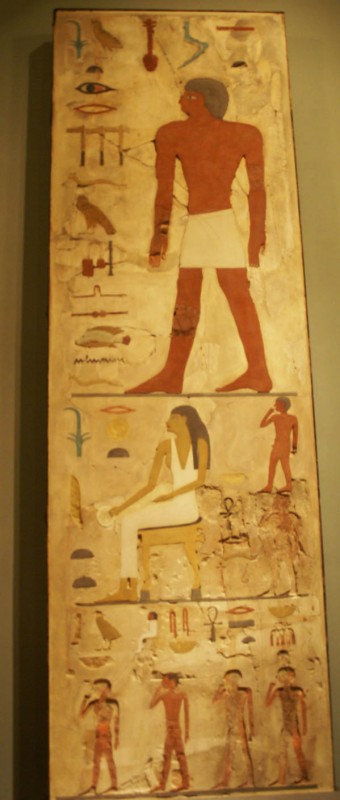
Figure 8. The importance of the written word, especially names and titles, is clear in this Old Kingdom stela of Nefermaat, “king’s eldest son,” “overseer of the works” and vizier to Seneferu, at the Oriental Institute, Chicago. The text says: “He is one who who made his signs in writing that cannot be erased.”
The all-important name (ren) was associated with the furnishings of the tomb along with the tomb’s owner: the deceased expected to take his treasures with him to his eternal home. The name, one of the nine aspects of being, or manifestations of the self (see Part 4), was a magical necessity of existence already acknowledged in the ontology of Predynastic times as a requisite for eternal life. Joyce Tyldesdley points out that “all Egyptian names had a meaning” (Tyldesley 2000, p. 172); she cites, for example, a New Kingdom trial in which the court changed the name of Mersure, one of the conspirators in the plot to assassinate Ramesses III, from Mersure (“Ra loves him”) to Mesedsure (“Ra hates him”), as punishment for his crime. Spiritual punishment was worse than corporal; Mersure could live without his ears or nose, but he could not live without his name. The written word had magical power: reality could be created, not just understood. Myth offered passive explanation, but writing, and ritual as well, provided active agency: they put divine power in mortal hands. The chief embalmer, for example, was Hery-seshta, “he who controls the mysteries”; eternal life depended on word and ritual. But these ideas were in place two millenia before we see them appear in the New Kingdom Book of the Dead.
Sine Qua Non: The Maintenance of Maat
Egyptian religion was rooted in a need to explain the created universe and maintain its order, and to understand the role and destiny of human beings, whose mortality called for theologies, mortuary practices and magic rituals that could defy death, just as divine beings could defy nature. Fulfilling those obligations encompasses virtually all the rest of Egyptian culture, which can be reduced to one necessity: the maintenance of maat.
Even jurisprudence was religious — “Any offence against law and order could be viewed as a religious matter, as an offence against maat” (Tyldesley 2000, p. 23) — because order in the universe depended on order in Egypt, and it was every Egyptian’s sacred duty to contribute to the stability that was ordained by their gods and entrusted to their king.
The iakbyt “mourning woman” determinative depicts a woman with unkempt hair throwing dust over her head. Richard Wilkinson notes that the mourners’ clothes may be in disarray or torn, as well, and women in mourning are shown baring their breasts — all subtle symbols with clear meaning to the Egyptians: that order has been temporarily lost (Wilkinson 1992, p. 35). Restoration of order is a necessity, but the temporary loss of order is not chaos; the two conditions are complementary, a balanced duality: from life to death to life eternal.
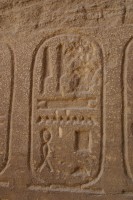
Figure 9. The glyph “Set” in Seti’s birth name was chiseled off in defiance of Seth, the principle of disorder, but the throne name Userkheperura was left unharmed.
This sense of balance is suggested very early in the Predynastic story of Seth, which provides a divine counterpart to the human story. [Figure 9] “As god of chaos and confusion, Seth lay outside the ordered universe, thus serving as a necessary complement to the divine order, since everything within the Egyptian system needed an opposing force in order to maintain the necessary balance” (Shaw/Nicholson 2008, p. 297). Seth’s opposite number, necessary for completion of the duality, was — from a human perspective — Osiris, who was everything Seth was not: decent, righteous, trustworthy and fertile; and — from a cosmic perspective — maat, deified as Maat, the daughter of Ra. “We tend to see Maat and Seth as elements in opposition … [but] to the ancient Egyptians, Maat and Seth appear as the two complementary opposites — controlled order and controlled disorder — necessary to create a whole which was itself distinct from uncontrolled chaos…. The maintenance of maat was the primary means of defence” (Tyldesley 2000, p. 19).
Now let’s leap forward a couple of thousand years to the 18th Dynasty and test all this established thought against its greatest challenge: Akhenaten’s Atenism.
Akhenaten and the Amarna Interlude: Monotheism?
The Amarna Period (more accurately, “interlude”) raises the question of whether Egypt was ever monotheistic. We cannot ignore Amarna, despite its brevity, nor simply dismiss the question of monotheism, even though the debate is an old one and today may seem a fool’s errand. The two matters are related, and a discussion of them specifically illuminates much in general.
One camp, originating in the 19th century, asserted that the Egyptians had one god and all the deities we refer to as “gods” were aspects of that one god: therefore they were monotheists. That has been dismissed as wishful thinking, stemming from ethnocentric Judeo-Christian and Muslim bias. The Egyptians did recognize a supreme being and lord of all (actually, several), but as Erik Hornung explains in Conceptions of God in Ancient Egypt, “the qualities of this supreme being do not attach to a particular deity, but may be attributed to any deity, even to relatively unimportant local gods.” Hornung points out that the word for god, netjer, can be read as any god — it does not mean “the one and only God.” Netjer, to the Egyptians, meant “‘whichever god you wish’ … The conception of god … is fluid, unfinished, changeable.” The idea of “god” therefore “escapes every dogmatic, final definition and can always be extended or further differentiated.” Hornung notes that “there is never the exclusivity that must be part of any definition of monotheism,” and that “dogmatic monotheism cannot exist” in such a conceptual environment (Hornung 1996, pp. 53, 59, 99, 235).
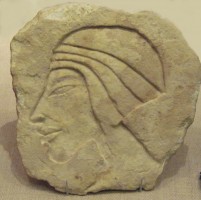
Figure 10. In the 18th Dynasty, Akhenaten posed the only real challenge to Egyptian religion with his Aten heresy.
In actual practice, “An Egyptian might [invoke] the protection of one god (Thoth), feel himself primarily a devotee of the god of his hometown temple (Amun), but address prayers to the local deities of the region in which he found himself at the moment” (Goelet/Faulkner 1998, p. 144). We might be tempted to find an analogy in “patron saints,” specialists in protection or consolation who are not deities themselves but represent humankind before God as intercessors. But that doesn’t quite work in Egyptian religion, because all these divine beings are deities, and, through syncretism, share supremacy. “Ultimately syncretism means that a single god is not isolated from the others: in Amun one apprehends and worships also Ra…. the divine partner of humanity is not one but many” (Hornung 1996, p. 98). The concept of “god” was a collective of aspects.
Understanding how the Egyptians thought is not an easy task. The solution is to suspend our rationality and accept the idea that they could be, and were, everything at once — polytheists who emphasized one deity over others as they wished, sometimes so prominently that they appear to be monotheists, recognizing one supreme god manifested in many aspects. The ancient Egyptians themselves did not have to wrestle with dogmatic absolutes — there was no orthodoxy — and we cannot impose a distinction on them in our own time that would not have occurred to them in theirs. We moderns tend to demand clear and rational demarcations; they did not.
Those who are determined to confirm monotheism in ancient Egypt may be encouraged initially when they encounter Akhenaten, but on closer examination discouragement sets in. Akhenaten (1353-36) was born as Amenhotep (IV), but when he launched his new religion in Regnal Year 5 he changed his name to reflect his direct connection to the sun disk, the Aten. [Figures 1o, 13]
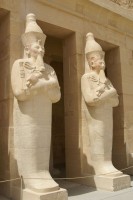
Figure 11. Hatshepsut had herself sculpted in the image of Osiris, but a century later the adoration of Osiris was forbidden by Akhenaten.
Actually the genesis of Atenism goes back far before Akhenaten, even to the time of his great-great-grandfather’s stepmother, Hatshepsut. And of course, a thousand years before Akhenaten, the sun temples of the 5th Dynasty, on the west bank north of Abusir, were dedicated to the sun god Ra, and the word aten had been used for the sun disk itself for centuries, but it wasn’t deified. Akhenaten’s father, Amenhotep III, began taking religious interest in the Aten, following his own father, Thutmes IV, but now 100 years after the first glimmer of interest in the aten disk as a divine being, Akhenaten stepped forward, first declaring it to be the greatest deity, and later the only deity. This would appear to be monotheism, but it’s better described, initially, as henotheism — the elevation of one deity above others, at least temporarily. (“Temporarily” bears definition: Amun, for instance, rose as as the national god of Egypt in the 18th Dynasty and held that distinction for a millenium.) The common people continued to worship their favorite gods despite Akhenaten’s official discouragement, and he did not proscribe other gods — at first. The precedent for henotheism extends back to the beginnings of theology, when a prime mover or creator god was identified by various schools of thought, along with the supporting myths, as we saw in Part 2. Each of those great gods reigned supreme but had a host of divine helpers, including the king himself.
What was new in the Amarna Period — and revolutionary enough to count as heresy in an otherwise ecumenical and accepting society — was that in Regnal Year 9 Akhenaten declared all other deities false, and moreover declared that he was the only connection between humanity and this one very strange and exclusive god; further, that he was made divine by that relationship, and therefore he himself was the rightful focus of worship. The traditional gods were banned, their identities were eliminated from monuments, the temples were closed and “the cults of their gods came to a standstill” (Jacobus Van Dijk/Shaw 2000, p. 277).
Even before that, Akhenaten had taken particular aim at Osiris. [Figure 11] In fact, “Osiris appears to have been proscribed from the very beginning of Akhenaten’s reign…. Darkness and death were completely ignored instead of being regarded as a positive, necessary state of regeneration…. There was no judgment of the dead before Osiris; instead, the king’s officials earned their life after death by following Akhenaten’s teachings and by being totally loyal to him during their lifetime. Akhenaten was the god who granted life” (Jacobus Van Dijk/Shaw 2000, p. 284). So the necessary duality of order was out, and hope for a life beyond was at the whim of Akhenaten.
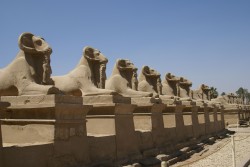
Image 12. Amun was likewise proscribed in the Amarna interlude, but after the restoration pharaohs again came under the protection of the supreme god, taking the form of a ram here at Karnak.
It is not hard to imagine why he zeroed in on Osiris, who was the focus of a deeply personal relationship between mortal souls and the “Good Shepherd” of the dead: Osiris was Akhenaten’s major competition for the hearts and minds of his subjects. Osiris was a very personal god whom people loved and trusted to preserve them in Eternity. Aten was an abstract god, just a concept, “Pure Light.” How do you worship “Light”? The people wanted an anthropomorphic god they could picture and think of in human terms; they liked the myths in which the gods lived as we do, in families — especially Osiris, the first born of the First Family. Traditional texts assured people that they “could know the god,” but in the Amarna theology — in Akhenaten’s manifesto called “The Teaching”— it was stated that “one cannot know the Aten,” for that relationship was reserved exclusively for the king (Teeter 2011, p. 187).
Akhenaten also tried to stamp out the worship of Amun and the Theban trinity (Amun, his wife Mut and their son Khonsu) — the deities who were carried on processions during the annual Theban festivals, which were now halted. Akhenaten replaced the processions of the gods with processions of his own. “Akhenaten was the god of his subjects. His daily procession, when he drove in his chariot along the royal road from the palace to the central city, replaced the traditional divine processions during which the inhabitants of a town could come into contact with the deities whose statues were normally hidden from view in the temple…. Personal piety was now identical with total loyalty towards Akhenaten personally” (Jacobus Van Dijk/Shaw 2000, pp. 283-84). [Figure 12]
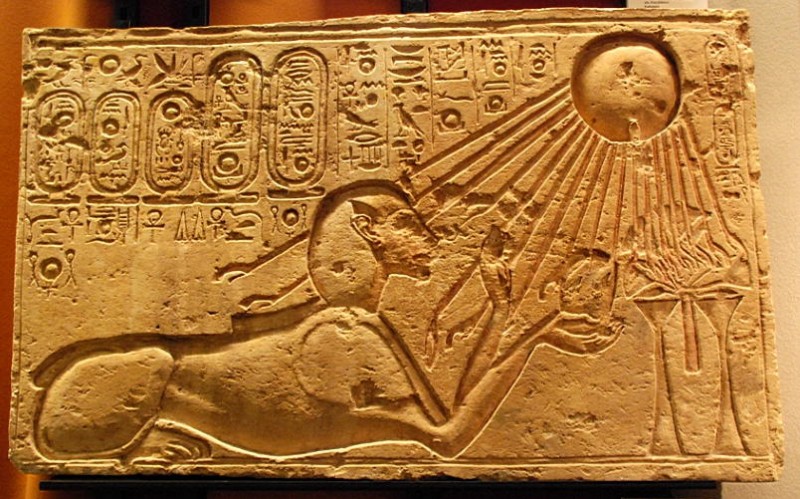
Figure 13. Akhenaten, shown as a sphinx, basks in the rays of the Aten, which shower down only on himself and the royal family. Photograph by Hans Ollermann.
In the art, “the rays of the Aten rain down on the king and his family, but not on his subjects…. All non-royal individuals stand outside the range of the Aten’s rays” (Teeter 2011, p. 187). [Figure 13] People had to worship Akhenaten as the only direct link to the divine. The fawning sycophants closest to the king proclaimed their delirious adoration with an exuberance reminiscent of the devotees of Hitler, or Kim Jong Il in our own times, and Akhenaten surrounded himself with such people as insulation from the rest of the world, enclosing himself in a cocoon of delusion.
In short, Akhenaten overturned 2,000 years of theology and religious practice completely. This was anathema to a conservative people who cherished ancient tradition and ritual, and felt so close to their personal gods. As noted in Part 3 re. temples, festivals, and personal piety, many homes had a shrine in the main room for daily worship, people thronged to see the image of god in the religious processions, parents named their children after gods and goddesses — they even wrote notes to their gods.
But that was not all. Far from it. Earlier we saw how religion was instrumental in forming the socioeconomic culture of ancient Egypt, and anchored the underpinnings of the Egyptian state. Now we will see how the new religion threatened to destroy it.
In the temples, the statues of gods were gone. In their place were statues glorifying Akhenaten and his wife Nefertiti. The dark sanctuary djeser-djeseru, the Holy of Holies, was gone; instead, there was a courtyard open to the sun and filled with small altars where Akhenaten alone represented humankind before the Aten. He fired the priests and temple staff, of whom there were thousands, and abandoned Thebes altogether. Thebes, dependent on its status as a governmental and religious center, was done for. Artisans and vendors who made and sold religious articles to the believers at the Karnak temple were put out of business. People didn’t have a priest to intercede for them anymore; they couldn’t leave their offerings and their messages to be passed on to the gods — they had to rely solely on Akhenaten. The democratization of the Afterlife had become the totalitarianization of the Afterlife.
The sed festival was supposed to occur in the pharaoh’s 30th year; Akhenaten held his as early as his third — and declared himself and the sun joint sovereigns in a co-regency, thereby signaling that he was not simply following the apostolic succession, but was associated with Creation itself. “Truth” was whatever Akhenaten said it was. In Year 11 all references to any gods other than Aten or Ra were eliminated — “wiped from history” in a “systematic program of state-sponsored iconoclasm”; personal names that included “Amun” and even the plural form of the word “god” (netjeru) came under the ax (T. Wilkinson 2010, pp. 265, 267, 269, 270; see also T. Wilkinson 2010, Chapter 14, pp. 275-82, and Jacobus van Dijk/Shaw 2000, Chapter 10, pp. 272-313).
He built a new capital city in the middle of nowhere, 180 miles north, with resources he had ransacked from the temples. The city was called Akhetaten, “Horizon of the Aten,” or, more tellingly, “the place where the Aten manifests himself and where he acts through his son, the king, who is ‘the perfect child of the Aten’” (Jacobus Van Dijk/Shaw 2000, p. 277). (“Amarna” is the Arabic term for Akhetaten.)
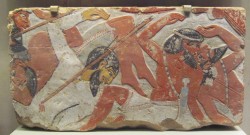
Figure 14. Asiatic soldiers are trampled as the pharaoh (Amenhotep II) exerts his power over foreign enemies, as testimony to right order.
Artistic traditions that had been in place for nearly 2,000 years were overturned. Amarna tomb art shows people adoring not the gods, but the king. “No longer … was the tomb owner the focus of scenes depicting him banqueting or supervising his estate. The new iconography dwelled on the king’s palace” and the king’s family (Teeter 2011, p. 191). Apparently Akhenaten regarded his wife Nefertiti as a divine being, too, because she also is shown interacting with the Aten, and on Akhenaten’s sarcophagus the traditional four goddesses who stood at the corners were replaced by figures of Nefertiti (Jacobus Van Dijk/Shaw 2000, p. 285). The pharaoh himself was no longer portrayed as emotionless, passive, larger-than-life and omnipotent, but very domestic, cuddling and playing with his loved ones, being a daddy — and imperfect. Akhenaten was pictured with odd, elongated and effeminate features, misshapen, even grotesque — very different from the godlike image of a supreme commander who was responsible for the order of the universe. [Figures 1o, 13]
Pharaohs were supposed to take command and protect Egypt aggressively. Akhenaten spent his time writing poetry and playing with his children. Absent the militant and fully engaged Thutmosid kings who had left a secure, stable and enormously prosperous Egypt to Akhenaten’s father, Amenhotep III, now foreign rulers were tempted to test the borders. The Hittites had defeated the Mitanni to become the major power in the Northeast, and Egypt was losing some territory there (Jacobus van Dijk/Shaw 2000, p. 287). Akhenaten was ignoring the prime responsibility of all pharaohs — preserving cosmic order by protecting Egypt — preferring to fiddle and schmooze with his wife and daughters instead of devoting full attention to affairs of state. [Figure 14]
When Akhenaten died, it was crucial to reinstate the order, integrity and religion of Egypt, especially the worship of Amun. Akhenaten’s successors began the work, tentatively at first — Smenkhara, possibly someone called Nefernefruaten (who actually may have been Nefertiti), and then the boy king Tutankhamun, under whom the pace picked up. The next monarch, Ay, had been a zealous Atenist under Akhenaten, but his reign was short, only four years, and by that time Atenism was no longer a viable creed because there was no apostolic dictator to please, so there was no political advantage for Ay in clinging to it. But when Horemheb took charge, all restraint and lukewarm hesitancy were gone, replaced by the iron will of a seasoned general determined to make the restoration complete, permanent and irreversible.
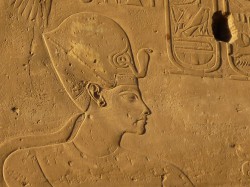
Figure 15. Horemheb wearing the khepresh blue battle crown, especially appropriate for a general who became pharaoh. Photograph by Rémih.
Scholars disagree about whether the restoration of Amun was sudden or gradual, but evidence seems to indicate that Horemheb’s concern was more for the integrity of Egypt than for the immediate restoration of Amun, or perhaps that the former objective was served by the latter. Amun would not resume his full role as king of the gods until the Ramesside pharaohs a generation later. But the territorial integrity of Egypt was now under management, and Horemheb further ensured that by naming a favored general as his successor: Ramesses I. After 30 years of rule under a disengaged, self-worshiping heretic, then a momentary placeholder or two, then a boy king who had to be led and managed, and finally an inconsequential old man, at last Egypt had in Horemheb a new pharaoh in the old mold: all-powerful, imperious, and iron-willed, who could assume the divine responsibility of an Egyptian king — the preservation of the universe. [Figure 15]
But we must not dismiss the Amarna interlude as a flash in the pan. Jacobus van Dijk says that “Although the Amarna episode lasted barely 20 years, its impact was enormous … perhaps the single most important event in Egypt’s religious and cultural history” (Jacobus van Dijk/Shaw 2000, p. 287), not least because of its elevation of the living pharaoh to divine status — a welcome boon for commoners like Horemheb and his successor Ramesses I, whose grandson Ramesses II would raise self-aggrandizement to an unprecedented level.
Amarna did not alter Egyptian religion, as reform movements do, but instead reconfirmed it, like tempering a red-hot blade in oil. The brief experience in a totally opposite and hostile environment made it stronger than before, and more certain to last. Later, long past the scope of time we’re covering, Egypt will decline, but through gradual deterioration, not sudden shock, and not through an erosion of its religion.
Conclusion
What we establish by juxtaposing the deep roots of ancient Egyptian history and the Amarna interlude is the durability, stability and permanence of the ideas that informed Egyptian culture and religion, and refused to be abandoned. And that brings us back to the beginning of the series, and to the crux of Egyptian thought: maat, supported by orderly structure and divine magic, all operating interdependently and necessarily.
We leave the Egyptian story here at the juncture of the 18th and 19th dynasties, but it will go on for another 1,300 years, sustained by its adherence to a religion reliant on those principles that were laid down in prehistory and challenged only once, very briefly, the actual impact of which was not to shatter the religious heritage but instead to reinforce and revitalize it.
This article concludes this year-long series, but now 33,000 words later, we find ourselves in the sandals of the ancient Egyptians themselves, grounded in the fundamental ideas received from the ancient past but recognizing that there is still much more to say. That will always be true of ancient Egypt: there will always be more to say.
Image Credits
Image 1. Judgement scene, Book of the Dead. Copyright Trustees of the British Museum.
Image 13. Stone block portraying Akhenaten in the Kestner Museum of Hanover, Germany. Photograph by Hans Ollermann. Sourced via Wikimedia Commons. This file is licensed under the Creative Commons Attribution 2.0 Generic license.
Image 15. Wall relief of Horemheb on a column of the colonnade of Amenhotep III, Luxor Temple, Egypt. Photograph by Rémih. Sourced via Wikimedia Commons. This file is licensed under the Creative Commons Attribution-Share Alike 3.0 Unported license.
All other photography copyright Brian Alm
References
Andelkovic, B. 2011, Political Organization. In Teeter (ed.) 2011, Before the Pyramids exhibit catalogue, Oriental Institute Museum, U. Chicago
Brewer, Douglas J, Emily Teeter. 2007, Egypt and the Egyptians, Cambridge U.P., Cambridge
Hendrick, Stan. 2011, Crafts and Craft Specialization. In Teeter (ed.) 2011, Before the Pyramids exhibit catalogue, Oriental Institute Museum, U. Chicago
Goelet, Ogden. 1998 commentary in The Egyptian Book of the Dead: The Book of Going Forth by Day (R. O. Faulkner, O. Goelet, tr.; Eva von Dassow, ed.), Chronicle Books, San Francisco
Friedman, Renee 2011, Hierakonpolis. In Teeter (ed.) 2011, Before the Pyramids exhibit catalogue, Oriental Institute Museum, U. Chicago
Hornung, Eric. 1996 (paperback edition), Conceptions of God in Ancient Egypt, Cornell U.P., Ithaca, N.Y.
Köhler, C.E. 2011, The Rise of the Egyptian State. In Teeter (ed.) 2011, Before the Pyramids exhibit catalogue, Oriental Institute Museum, U. Chicago
Shaw, Ian; Paul Nicholson. 2008, Illustrated Dictionary of Ancient Egypt, American University in Cairo Press
Shaw, Ian, (ed.) 2000, The Oxford History of Ancient Egypt, Oxford U.P., New York
Teeter, Emily. (ed.) 2011, Before the Pyramids exhibit catalogue, Oriental Institute Museum, U. Chicago
Teeter, Emily. 2011, Religion and Ritual in Ancient Egypt, Cambridge U.P., Cambridge
Tyldesley, Joyce. 2000, Judgement of the Pharaoh: Crime and Punishment in Ancient Egypt, Phoenix, London
Wengrow, David 2011, The Invention of Writing in Egypt. In Teeter (ed.) 2011, Before the Pyramids exhibit catalogue, Oriental Institute Museum, U. Chicago
Wilkinson, Richard H. 1992, Reading Egyptian Art, Thames & Hudson, London
Wilkinson, Toby. 2010, The Rise and Fall of Ancient Egypt, Random House, New York
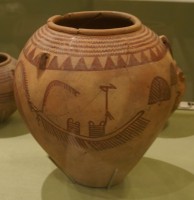
 By
By